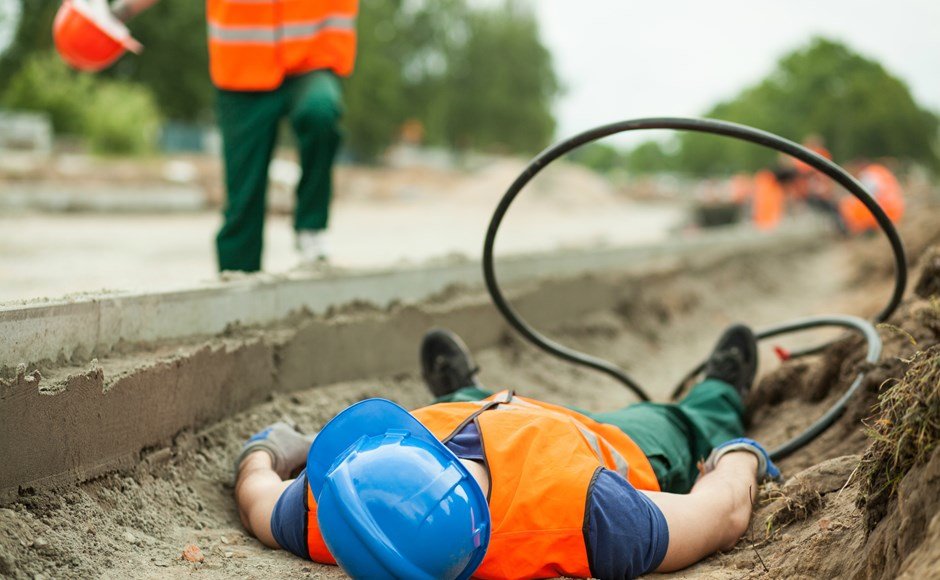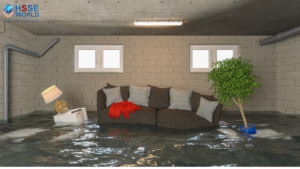Personal Emergency ID the Strategic and Operational Benefits
7 min readAfter saying goodbye to his wife one damp, cloudy Tuesday, Bob got into his truck, sipped his coffee, and started to drive to work in a neighboring town about half an hour away. To Bob, it seemed like a pretty average, normal working day.
But it was far from it.
He had recently started a contract job on a fairly large construction site with a range of essential building and infrastructure tasks. He barely knew his colleagues. He sort of knew their names and their favorite football teams, but not a great deal else. All in all, though, they weren’t a bad crew and they had the construction project on schedule. At 11 a.m., without warning, an on-site electrical fault occurred, generating both fire and large amounts of hazardous smoke near where Bob was working. Bob tried to get away, but he was quickly overcome by the fumes and collapsed nearby.

The firefighters were first to the incident and located the source of the fire and Bob, who remained unconscious. At this point, Bob’s supervisor and co-workers realized how little they actually knew about him in order to help the paramedics when they arrived.
Fortunately for Bob, the health and safety manager had implemented a Personal Emergency ID regime on the site. When firefighters moved Bob to a safe place, the paramedics quickly assessed him and accessed his ID. They learned a lot very quickly. Bob’s ID told them that he had an underlying respiratory condition likely to have been severely exacerbated by the fire fumes. They also learned his full name, what medication he took, and how to contact his family in the event of an incident like this one.
I’m pleased to report that this incident had a happy outcome and that Bob returned to the plant a few weeks later, fitter and holding down his job well. It illustrates very clearly how little is often known about employees and contractors. It also shows that a small amounts of information about a person can have a very positive bearing on management of the situation by medics, first responders, and other professional incident managers.
Small Things that Make a Big Difference
Knowing a few simple things about a person when an accident occurs or a medical condition arises can have a significant impact:
- Who is (s)he?
- How do we contact his or her boss or supervisor?
- How do we contact his or her family?
- Does (s)he have any significant underlying medical conditions that could help paramedics when managing the situation?
- Is (s)he taking any medication?
Efficient and effective management at the start of an accident or when a medical condition arises, improves the likelihood of a positive outcome in the longer term. Having easy access to these details can make all the difference.
Incidents like Bob’s are happening worldwide in construction, on industrial plants, in factories, offices, railways, oil and gas sites – anywhere, in fact. They can involve employees, contractors, lone workers, and teams. It’s a ubiquitous situation.
The Risk Management Toolbox
Personal Emergency ID is an important component of the risk management toolbox (both operational and strategic) for health and safety professionals in the construction industry.
At one level, ID is a low-cost tactical operational tool that helps first responders at an incident, while also helping with day-to-day worker identification. Personal Emergency ID can also serve as a mark of best practices and proactive safety management when it comes time to negotiate insurance premiums. When Personal Emergency ID adheres to PPE, it can promote greater ownership of the equipment.
Implementing Personal Emergency ID also has a strategic benefit. In particular, it helps raise the bar by setting higher expectations for health and safety in the workplace. It can also reinforce workplace safety culture by augmenting training and enhancing procedures . This helps workers take greater personal responsibility for their health and safety and to promote the use of Personal Emergency ID themselves, without intervention or coercion from the health and safety team.
Personal Emergency ID is a win-win for workers and their organizations: it’s a simple way to protect both their people and their reputation.
Types of Personal Emergency ID
While there are many types of Personal Emergency ID, the main division is between those that are low tech and those that use some form of electrical device, scanner, telecommunications device, or chip.
Here we’ll take a cursory look at the options and some of the principal constraints you need to be aware of when weighing your options.
Low Tech Options
Low tech Personal Emergency ID options cover a wide spectrum of devices, from dog tags and hand-written ID cards to wrist bags and ID that adheres to hard hats and other PPE.
The principal benefit of the low tech options are their lower cost and the ability to access the information without a computer, bar scanner, or cellular network.
Simplicity is key here. In the event of an incident, first responders can quickly see a few key pieces of information about the incapacitated worker.
To be effective, these low tech options need to adhere to the C.A.R.R. principle. In other words, they must be:
- Conspicuous: Visible and it is clear what it is and where it is
- Accessible: The information must be easily retrievable and readable
- Relevant: The information needs to be accurate, and not necessarily voluminous
- Resilient: Withstands both the weather and to the worker’s job tasks
Let’s take a moment to consider some of the most frequently asked questions or common misconceptions about these forms of ID.
“I only need to provide Personal Emergency ID to workers who have a medical condition or take medication.”
Personal Emergency ID is for anyone who might be incapacitated following an accident. in other words, it’s for everyone.
Moreover, you don’t know who has a medical conditions. Many workers choose to keep their medical conditions or medications private. But those workers are usually prepared to write their medical information on an ID when they know it will be used in the event of an emergency.
“What about my data security liability?”
Make sure workers have the right to choose if and what information to supply. Employers can reasonably insist that an ID includes a worker’s name and the contact details for their boss. Leave it up to individuals to supply what other information they want on the ID for use at the time of an emergency.
This has to be the individual’s choice. Not only does it respect their autonomy, but it also encourages them to take ownership of their own health and safety. A softer approach will achieve greater worker participation without compromising your compliance status.
Most products also have tamper-proof seals or similar measures to ensure that the data is contained securely, keeping private data private. This way, it is seen only by the right people in the event of an accident or medical emergency.
“Where the ID adheres to a helmet, does the glue damage the helmet?”
This may have been an issue in the past, but today, mainstream manufacturers have specifically formulated adhesives that eliminate this problem. Many helmet Personal Emergency IDs now stick to hard hats for long periods without compromising their strength.
“Where the ID uses ink and paper to hold information, how do I stop it getting wet and smudging the information?”
Look for a waterproof Personal Emergency ID system. Check that the paper or card used inside the ID is specifically manufactured to prevent ink from running when it gets wet. Using a permanent marker can help a lot.
High Tech Options
Having Personal Emergency ID in the form of a memory card or chip means that a lot of detailed personal information can be stored and read. But this is conditional on first responders and incident managers having access to a device that can read it.
Some products use bar and QR codes. Once scanned, these enable first responders and paramedics to access the breadth of relevant medical and non-medical information. Like memory cards, these are very effective at providing detailed information, but it does rely on people at the scene of an incident, or nearby, being able to use devices to do the scanning and reading.
Particularly for lone workers and those working in the field, some Personal Emergency ID include a tracking device so the workers can be easily located in the event of an incident. Many rely on the cellular network, so the race is on to find low-cost global solutions that use satellite networks to pinpoint someone’s remote location and allow them voice contact using adapted smartphones.
Back to Bob
In the end, the right choice for Personal Emergency ID comes down to your people and your teams. When fire broke out that fateful Tuesday, Bob didn’t know that the decision his health and safety manager made only a few weeks earlier would have such a decisive and positive impact on him and his family. That should give us all food for thought.



